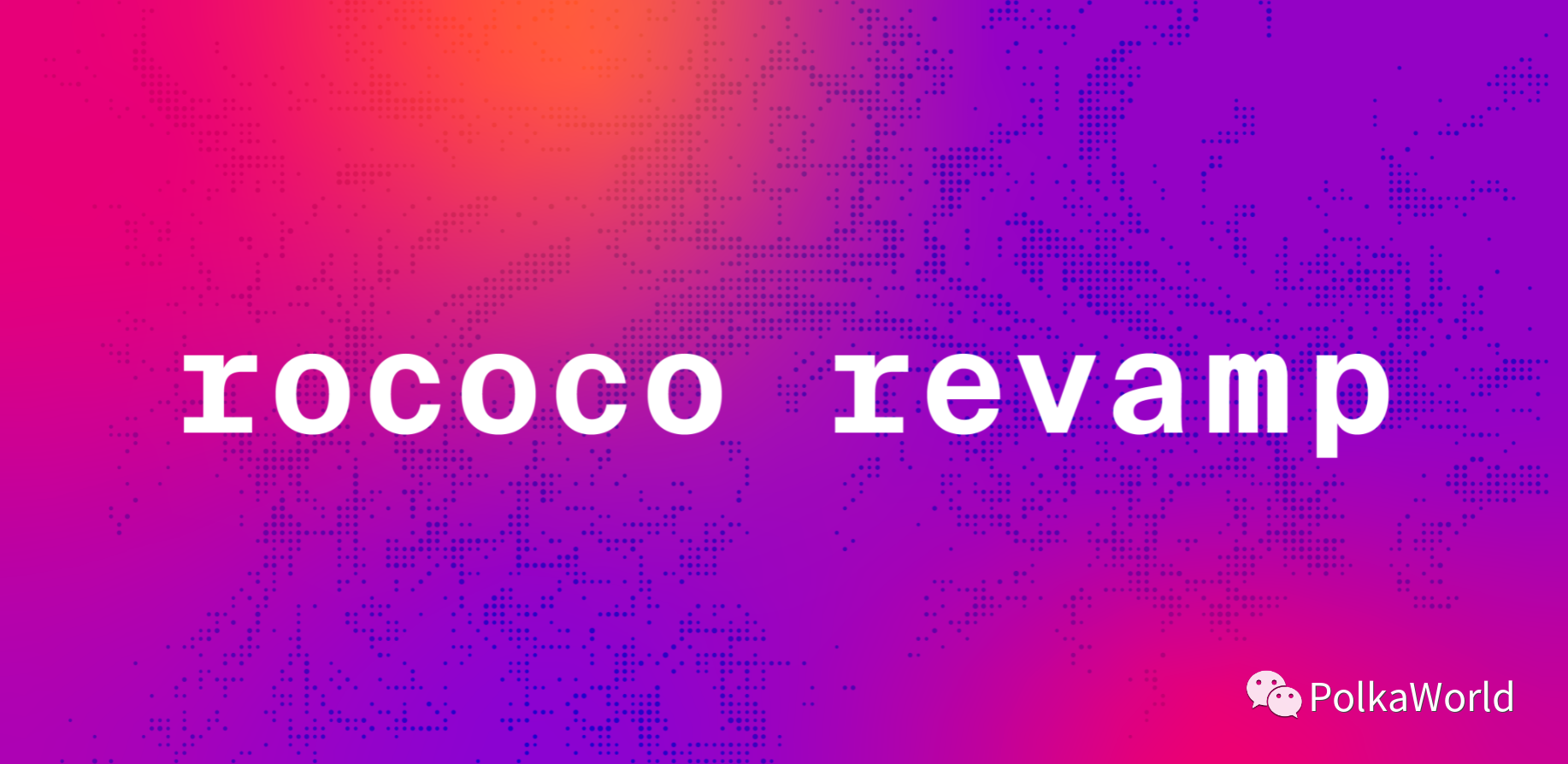Join the PolkaWorld community and build Web 3.0 together!

Join the PolkaWorld community and build Web 3.0 together!
This article was published by Ben Weiß, Head of Ecosystem Construction at Parity Technologies.
The Rococo has come a long way in its short life. It was first used to test the function of the parachain in the summer of 2020, and now it has developed into a test network for those teams building parachains in the Polkadot ecosystem.
Rococo V0 implements Polkadot's first integration with Cumulus and HRMP. The next Rococo V1 upgrade focuses more on optimizing parachain consensus with a production-ready code base. Polkadot founder Robert Habermeier announced Rococo as a "holiday gift" in late 2020, and this updated version was adopted by the Polkadot community as they hardened their chains in preparation for parachains and worked together to push the technology to its limits.
After many iterations, runtime updates, and restarts, the technology was improved, and Parity's parachain team finally proposed the first implementation of the parachain code to the Kusama Council, laying the groundwork for the first Kusama parachain Auction. Base. With the Kusama Parachain Auction voting and execution concluded, and the Kusama network's stability report showing positive results, the entire parachain code is now ready for production, and Polkadot's first round of auctions will take place on November 11, 2021. day starts.
Rococo's future
Throughout its history, Rococo has been primarily focused on internal testing of parachain consensus functionality. Due to occasional and unpredictable restarts, it lacks the long-term sustainability support needed to build broad cross-consensus message (XCM) format functionality between projects.
It's time to change the Rococo story and make the Rococo network an enabler for the Polkadot developer community. Over the next few weeks, Parity Technologies and our amazing community of builders will roll out different features on Rococo in phases and transition it to a fully community-maintained parachain testbed.
After all these updates and yet another reboot, Rococo is expected to roll out an updated chain specification by the end of November, finally providing the Polkadot ecosystem team with a network to test their projects and use cases on.
secondary title
Open Rococo to the community
The final step in the process, at least for now, is to open the validator pool to the community and transition to a decentralized network maintained by the community for the community.
With this evolution of the network, the community will have a more stable Rococo that follows the Kusama and Polkadot release cycles and acts as a community parachain testnet. This will provide a proving ground for parachain teams to develop and test their parachains.
At the same time, as a pre-production deployment chain for Kusama and Polkadot's relay chain upgrade and parachain launch, Westend will remain as close as possible to Kusama in terms of code and storage. Kusama maintains its role as an early, unaudited but incentivized Polkadot canary network, and of course, Polkadot serves as a production-grade real-world environment.
We strongly encourage the community to take advantage of Rococo's opportunities to deploy and test cross-chain solutions, pushing the technology to the limit in a multi-chain cross-consensus world. Together we can advance the vision of Web3 to create a better and fairer internet for all.
Parachain developers and Rococo testnet users can join our parachain technology chat room (https://matrix.to/#/!WuksvCDImqYSxvNmua:matrix.parity.io?via=matrix.parity.io&via=matrix.org&via =web3.foundation). You can access Rococo UI at Rococo Polkadot-JS Apps. Documentation on parachains is in the Implementers Guide (https://w3f.github.io/parachain-implementers-guide/).
Follow Substrate progress:
Welcome to learn Substrate:
https://substrate.dev/
Follow Substrate progress:
https://github.com/paritytech/substrate
Follow Polkadot progress:
https://github.com/paritytech/polkadot